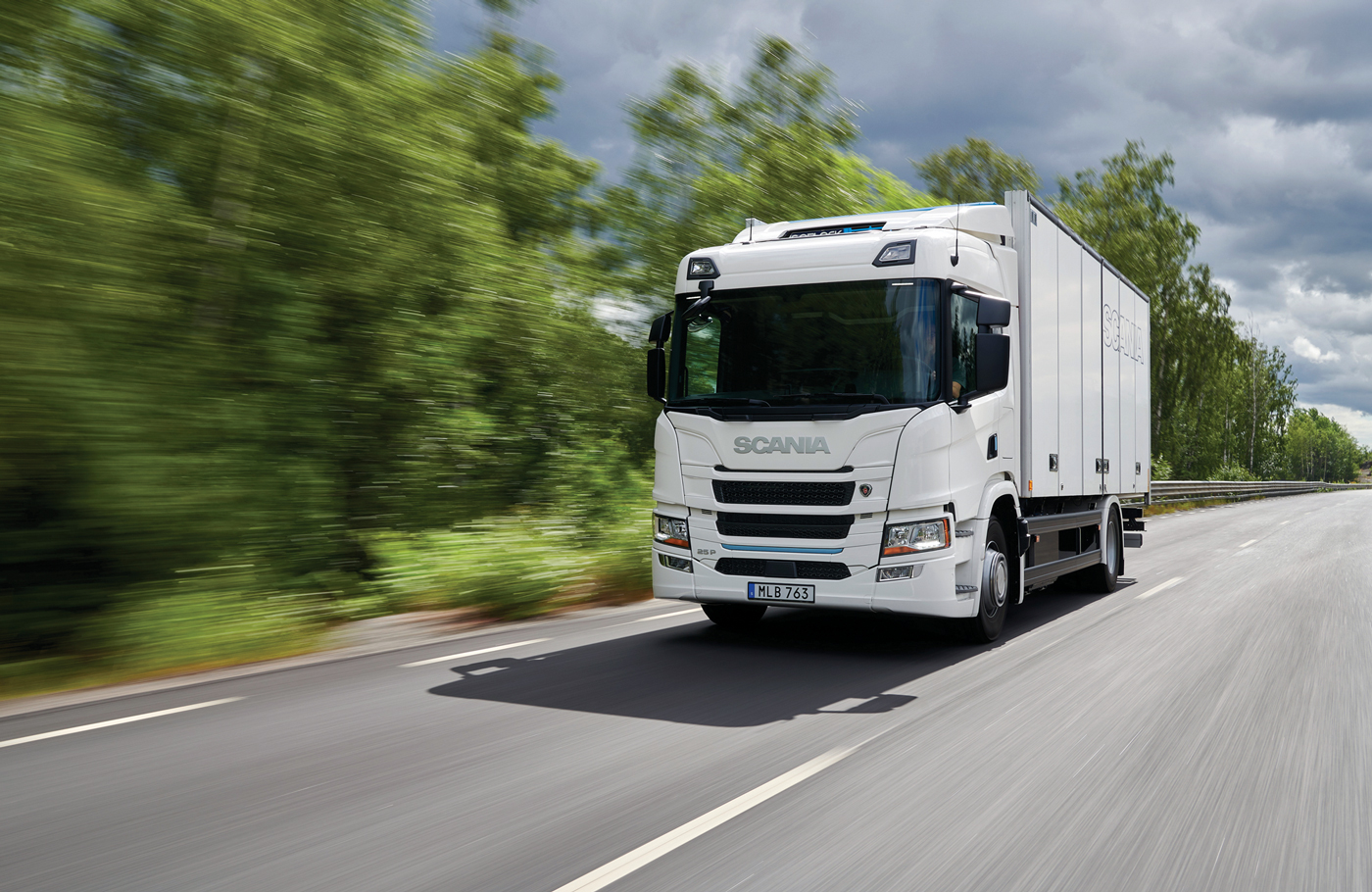Scania heads down electric avenue!
Scania heads down electric avenue!
Driving a transition to zero-emission vehicles, Scania is already series-producing fully electric vehicles and actively testing heavier-duty electric trucks in customer operations. Electric trucks will soon have the range necessary for widespread use in long-haul applications, thanks to rapid improvements in battery technology.
Sustainable transport depends on many tools and technologies, from biofuels to energy-efficient powertrains. But of all these technologies, none will have a greater long-term impact than electrification. In addition to a wide range of fully electric and hybrid-electric vehicles, Scania is also beginning to test fully electric trucks in operations that have until recently been considered very difficult or even impossible to electrify, such as timber, remote, and heavy and long-distance transports.
Despite wide-spread optimism, the shift to electrification will not be easy. It will require significant investments in new production facilities and technological innovations, as well as sustainable supplies of large volumes of batteries and related components. Due to a new reliance on access to clean energy and high-voltage electrical grid capacity, partnerships with energy companies and charging infrastructure suppliers will also be crucial.
Over the coming decades, electrifying heavy commercial transport will be key for limiting the impacts of climate change, and Scania has already set ambitious targets in this regard.
COMMITTED TO 50% EMISSION REDUCTION
Scania was the first commercial vehicle company to set science-based carbon reduction targets. Through the Science Based Targets initiative, the manufacturer has committed to halving CO2 emissions from its own operations and reducing emissions from customers’ vehicles by 20% by 2025.
Scania has also joined The Climate Pledge, committing to net-zero carbon emissions by 2040, and is a LeadIT member, working to achieve net-zero carbon emissions in energy-intensive heavy industry by 2050.

Through the CEO Alliance, Scania CEO Christian Levin is working with fellow business leaders to drive sustainable transformation through joint projects focused on infrastructure, transport, and energy in support of the EU Green Deal.
Scania is also a signatory to the first global Memorandum of Understanding for zero-emissions heavy trucks and buses, committing to 30% zero-emissions sales by 2030 and over 90% zero-emission sales worldwide by 2040.
ELECTRIFICATION ROADMAP
To give customers and partners as much clarity as possible regarding the speed of change and implementation, Scania has published an electrification roadmap for upcoming product introductions.
A battery-electric truck (BEV) and a plug-in hybrid truck (PHEV) have been launched for urban operations, in addition to the fully electric Scania Citywide bus, which operates in several European cities.
The 29-tonne BEV truck has a range of 250 km on a 90-minute charge, while the 29-tonne PHEV has an all-electric range of 60 km when fully charged. The updated 36-tonne PHEV, meanwhile, has an all-electric range of 60 km after 35 minutes of charging.
In 2023, heavier BEV trucks intended for regional transport will be capable of running for four hours with 40 tonnes gross weight or three hours with 60 tonnes gross weight, while in 2024, long-distance electric trucks adapted for fast charging during drivers’ 45-minute rest breaks will enter the market.
By 2025, Scania aims for 10% of sales to be electrified and will be able to electrify most operations, including construction, mining, long haulage, and timber trucks.
Despite having the technical capability to electrify more or less any application by the second half of the decade, this will not yet be profitable for all customers in all markets. The aim, therefore, is to have 50% of total vehicle sales volumes electrified by 2030.
For this to happen, charging infrastructure and renewable electricity will be needed, so infrastructure investments and partnerships for battery electric vehicles are key priorities.
CHARGING AND INFRASTRUCTURE
Major investments are needed to upgrade the electrical grid and to increase the supply of renewable energy to ensure sustainable energy infrastructure.
To speed up the transition to electrified vehicles, Scania (as part of Traton Group) has signed a binding agreement alongside other leading European commercial vehicle manufacturers to create a joint venture (JV) to install and operate a public charging network for heavy-duty electric trucks and coaches across Europe.
A total of €500 million will be invested by the JV to install and operate at least 1 700 high-performance green energy charging points – open to all and compatible with all commercial vehicles in Europe – over five years. This is expected to grow significantly over time through additional partners and public funding.
Scania also partners with energy and charging infrastructure suppliers to provide complete depot charging solutions to transport providers, as well as being involved in several research projects in Germany, Italy, Sweden, and Great Britain to investigate electric highway solutions, which would allow vehicles on the busiest routes to charge on the move using overhead power lines.
BATTERY SUPPLY CHAINS AND INDUSTRIAL EXPANSION
Electric vehicles produce zero tailpipe emissions, but new supply chains for batteries and related components create new challenges, as battery manufacturing is more energy-intensive than manufacturing internal combustion engines.
The speed of change in battery development is high, with great strides taken in recent years to better adapt battery cells for heavy vehicles. So far, however, supply is limited – even more so for sustainably-produced batteries.
Reducing supply chain emissions is crucial for reaching Scania’s net-zero goal. Through a partnership with Northvolt, which aims to produce the world’s greenest batteries using renewable energy, the company will be able to significantly reduce battery production emissions. Partnerships with low-carbon steel providers such as H2 Green Steel promise additional supply chain emission reductions.
Operating an on-site battery assembly plant is a prerequisite for the large-scale production of electric vehicles. To this end, Scania is building an 18 000-m2battery assembly plant next to its chassis assembly facility in Södertälje, Sweden. The facility should be fully operational by 2023.
It is also essential to intensify battery testing and deployment tailored for heavy transport, which is why Scania has built a new battery laboratory at its research and development facilities in Södertälje.
UNPARALLELED SERVICE
All electric vehicles come with a complete service solution that covers the agreed service life of the vehicle and ensures the availability of charging, spare parts, and certified electric vehicle mechanics.
Scania also provides continuous tailored, data-driven consulting to optimise charging, vehicle specifications, and route planning. Long-term financing for both vehicles and charging infrastructure, as well as support and access to data, ensure that Scania can maximise and optimise operational capability at all times.
This approach allows customers to focus on running their operations rather than the complexity of the technological shift.
WHAT ABOUT HYDROGEN?
With all the focus on electrification, what about hydrogen? Scania’s engineers believe this to be a very promising energy carrier that will play an important role in the decarbonisation of the energy system and industry, not least in the production of fossil-free steel. The manufacturer has invested in hydrogen fuel cell technologies and has hydrogen trucks in operation with customers in Norway and Sweden.
One reason for Scania’s strong focus on battery electric vehicles is that a lot of energy is lost in the production, distribution, and conversion back to electricity of hydrogen. Despite this, however, hydrogen may still be an interesting solution for some applications.
Published by
Focus on Transport
focusmagsa






